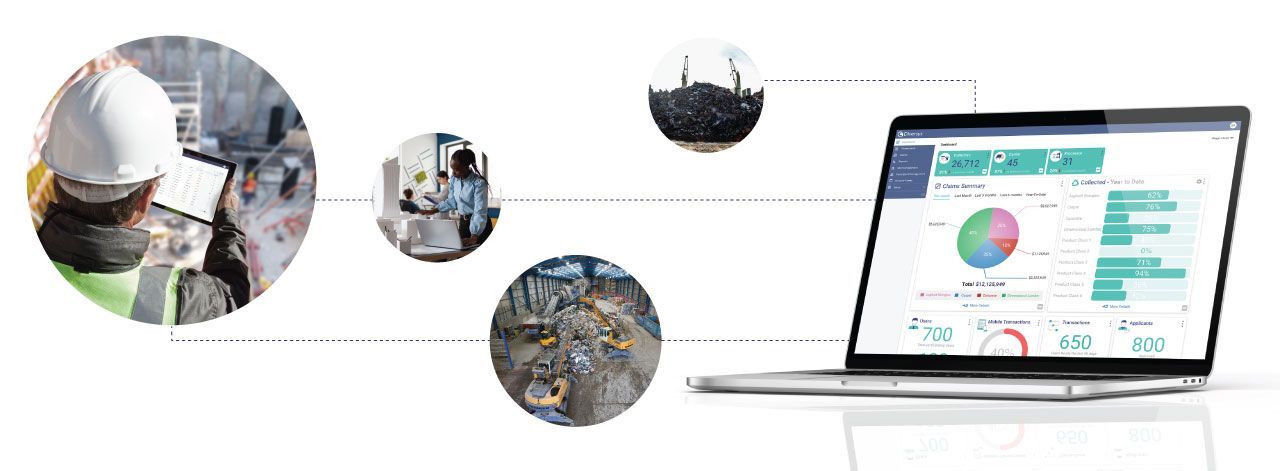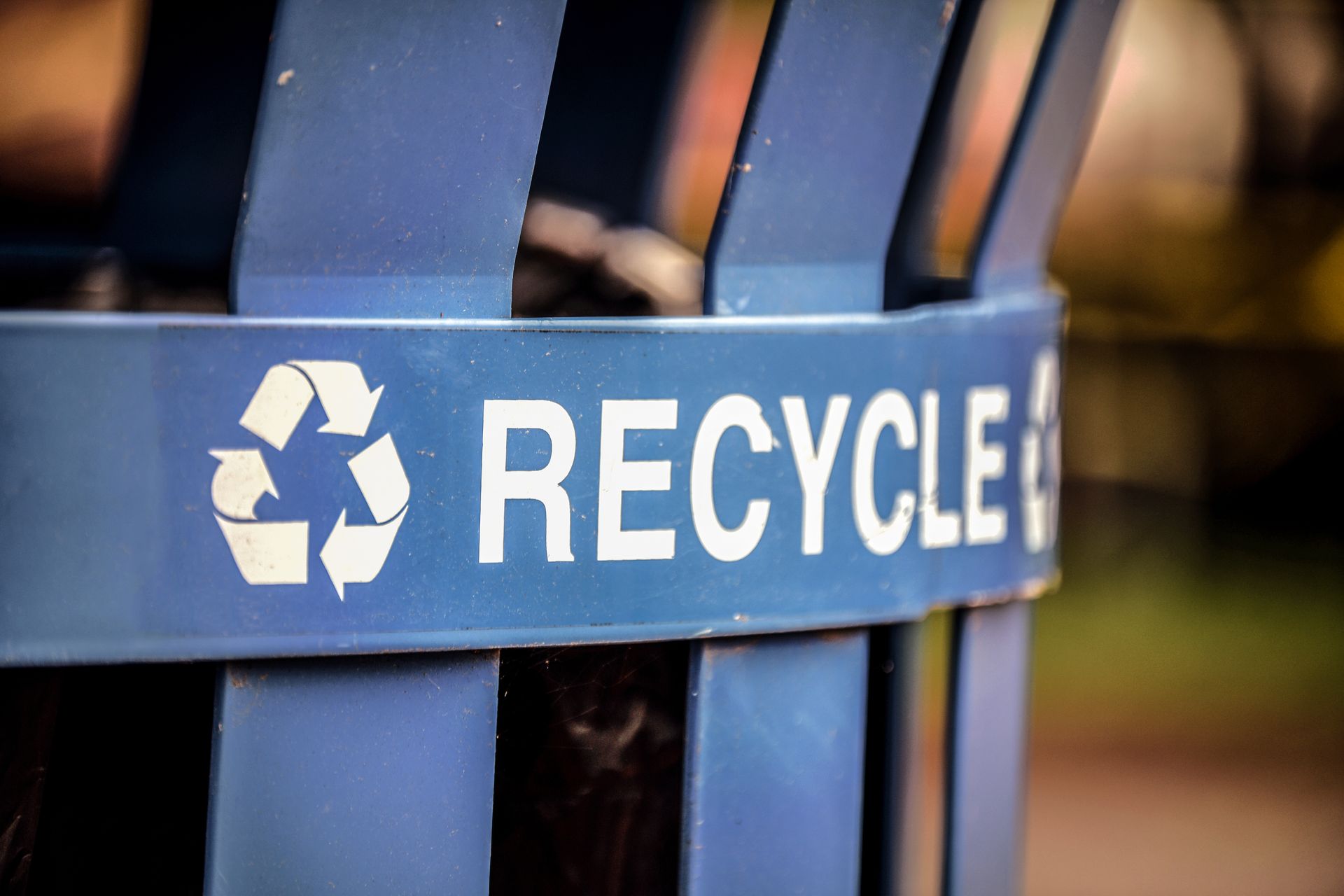Cloud-based Waste Recycling Tracking in Construction and Demolition
Track construction and demolition waste with confidence with a purpose-built cloud-based solution for program oversight. Get complete end-to-end visibility of waste recycling activities and enable real-time data capture for compliance and reporting.
Cloud-based Waste Recycling Tracking in Construction and Demolition
Track construction and demolition waste with confidence with a purpose-built cloud-based solution for program oversight. Get complete end-to-end visibility of waste recycling activities and enable real-time data capture for compliance and reporting.
Construction and Demolition Waste Recovery Oversight and Management
Diversys empowers recycling program oversight and management for government, environmental stewards, producer responsibility organizations, recycling authorities, and municipal/local governments. The platform provides accurate, auditable, real-time data tracking and reporting to meet regulatory requirements with trustworthy data for oversight.
Tackling Sustainability Challenges in Construction and Demolition Waste Management
Improper management of Construction and Demolition (C&D) waste has a very real impact on the environment and regulatory requirements such as green building laws are taking on these consequences. Multi-stream, mixed-stream, and invisible waste streams in C&D waste management pose a significant challenge and consist of various material types including concrete, wood, metal, or even dirt. Builders, excavators, and demolition companies all have a role to play in improving sustainability and ensuring regulatory compliance to minimize the environmental costs of C&D waste.
Tackling Sustainability Challenges in Construction and Demolition Waste Management
Improper management of Construction and Demolition (C&D) waste has a very real impact on the environment and regulatory requirements such as green building laws are taking on these consequences. Multi-stream, mixed-stream, and invisible waste streams in C&D waste management pose a significant challenge and consist of various material types including concrete, wood, metal, or even dirt. Builders, excavators, and demolition companies all have a role to play in improving sustainability and ensuring regulatory compliance to minimize the environmental costs of C&D waste.
The Business Impact of Waste Materials Tracking in C&D
GHG performance per site
Managing greenhouse gas emissions generated from construction activities and waste disposal requires accurate data and visibility into waste streams.
WASTE MATERIAL TRACKING
Ensuring transparency and traceability in the waste disposal process is vital to minimizing environmental impact, meeting regulatory requirements to avoid penalties and fees.
MULTIPLE WASTE STREAMS
Differentiating between mixed waste streams (which contain multiple types of materials) and invisible waste streams (those that are not immediately apparent) is crucial for proper waste management and recycling.
Hidden costs
Failing to track material excess across projects can result in inflated purchases and inaccurate predictions that ultimately lead to increased volumes of unused materials as well as increased waste disposal and recycling costs.
C&D Waste Tracking and Recycling Obstacles
Inconsistent Data
Limited visibility into waste streams and suppliers results in inconsistent data collection and reporting, restricting oversight of waste diversion and recycling.
Tracking Challenges
C&D waste comes in varying types, materials, and quantities, and the lack of industry standardization further complicates waste tracking and management.
Collaboration Hurdles
Decentralized participants limits stakeholder collaboration and visibility into the C&D waste stream, impeding proper handling and disposal of materials.
Complex Processing
Different disposal methods, transportation requirements, and processing techniques add complexities that cause data inaccuracies and hinder regulatory compliance.
Learn how Diversys solves C&D waste tracking and management with a unified platform that streamlines the process to more easily meet regulatory requirements.
The Business Impact of Waste Materials Tracking in C&D
GHG performance per site
Managing greenhouse gas emissions generated from construction activities and waste disposal requires accurate data and visibility into waste streams.
WASTE MATERIAL TRACKING
Ensuring transparency and traceability in the waste disposal process is vital to minimizing environmental impact, meeting regulatory requirements to avoid penalties and fees.
MULTIPLE WASTE STREAMS
Differentiating between mixed waste streams (which contain multiple types of materials) and invisible waste streams (those that are not immediately apparent) is crucial for proper waste management and recycling.
Hidden costs
Failing to track material excess across projects can result in inflated purchases and inaccurate predictions that ultimately lead to increased volumes of unused materials as well as increased waste disposal and recycling costs.
C&D Waste Tracking and Recycling Obstacles
Inconsistent Data
Limited visibility into waste streams and suppliers results in inconsistent data collection and reporting, restricting oversight of waste diversion and recycling.
Tracking Challenges
C&D waste comes in varying types, materials, and quantities, and the lack of industry standardization further complicates waste tracking and management.
Collaboration Hurdles
Decentralized participants limits stakeholder collaboration and visibility into the C&D waste stream, impeding proper handling and disposal of materials.
Complex Processing
Different disposal methods, transportation requirements, and processing techniques add complexities that cause data inaccuracies and hinder regulatory compliance.
Learn how Diversys solves C&D waste tracking and management with a unified platform that streamlines the process to more easily meet regulatory requirements.

Experience Diversys for Yourself
12M+ KG
of materials being tracked
$6.4M+
in fees and billable claims being tracked
30%-50%
REDUCED ADMINISTRATIVE EFFORTS & COST

Experience Diversys for Yourself
12M+ KG
of materials being tracked
$6.4M+
in fees and billable claims being tracked
30%-50%
REDUCED ADMINISTRATIVE
EFFORTS & COST

Experience Diversys for Yourself
12M+ KG
of materials being tracked
$6.4M+
in fees and billable claims being tracked
30%-50%
reduced administrative
efforts & Cost
Consistent C&D Waste Tracking and Data Capture for Oversight

Diversys provides a mobile and web application pairing that delivers real-time data and complete end-to-end tracking of the waste recycling value-chain. Our platform provides accurate, standardized data capture from the field to downstream waste diversion and recovery, enabling participants to digitize and streamline processes.
Standardize C&D Data Capture to Reduce Errors
Standardize and capture data from the field to reduce errors and ensure accurate and consistent waste recycling reporting.
Real-time C&D Digital Record Keeping
Diversys' real-time digital record keeping replaces manual processes, streamlining data management and improving workflow while reducing costs and ensuring accurate reporting.
Improve Environmental Impact with Proper C&D Waste Management
Properly track C&D waste diversion and recovery to measure impact on the environment, reducing pollution, greenhouse gas emissions, and habitat destruction.
Maximize Visibility with Complete End-to-End Tracking of C&D Waste Recycling
Reduce errors and fraud risk with end-to-end tracking of C&D waste recycling activities and get real-time oversight with accurate, reliable data for compliance.
Enhance Data Quality with Standardized Data Capture
Standardize data capture directly from the field to ensure accurate and consistent waste recycling reporting and compliance with consistent data collection and reporting standards.
Improve Program Oversight with Real-Time Data Capture and Reporting
Real-time data capture and reporting for complete C&D waste recycling oversight and operational visibility to ensure compliance and proactive issue resolution.
Maximizing Efficiency and Sustainability from Construction and Demolition with Diversys
Diversys offers a comprehensive solution to address the challenges of waste in construction and demolition. With digital record-keeping and standardized data capture, Diversys improves program oversight, enhances data quality, and maximizes visibility empowering organizations with data-driven decision making to reduce project costs and improve environmental outcomes.

Save money by understanding what's being used, wasted, and recycled, ultimately cutting costs associated with waste disposal and recycling.
Address issues around multi-stream, mixed-stream, and invisible waste streams by providing real-time visibility and accurate data capture for waste tracking.
Help organizations measure sustainability performance and meet reporting requirements with standardized data collection, ensuring compliance with environmental regulations.
Utilize waste diversion and recycling rates data to track, measure, and improve GHG performance, enabling organizations to reduce their carbon footprint and achieve sustainability goals.
Maximizing Efficiency and Sustainability from Construction and Demolition with Diversys
Diversys offers a comprehensive solution to address the challenges of waste in construction and demolition. With digital record-keeping and standardized data capture, Diversys improves program oversight, enhances data quality, and maximizes visibility empowering organizations with data-driven decision making to reduce project costs and improve environmental outcomes.

Save money by understanding what's being used, wasted, and recycled, ultimately cutting costs associated with waste disposal and recycling.
Address issues around multi-stream, mixed-stream, and invisible waste streams by providing real-time visibility and accurate data capture for waste tracking.
Help organizations measure sustainability performance and meet reporting requirements with standardized data collection, ensuring compliance with environmental regulations.
Utilize waste diversion and recycling rates data to track, measure, and improve GHG performance, enabling organizations to reduce their carbon footprint and achieve sustainability goals.
Knowledge Center




Knowledge Center




Contact Diversys Today
Get in touch with our team and learn how Diversys can help you manage your construction and demolition waste stream. Contact us today to schedule a demo or learn more.
CONTACT US
Contact Diversys Today
Get in touch with our team and learn how Diversys can help you manage your construction and demolition waste stream. Contact us today to schedule a demo or learn more.
CONTACT US
Contact Diversys Today
Get in touch with our team and learn how Diversys can help you manage your construction and demolition waste stream. Contact us today to schedule a demo or learn more.
CONTACT US
